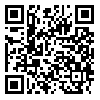BibTeX | RIS | EndNote | Medlars | ProCite | Reference Manager | RefWorks
Send citation to:
URL: http://ijn.iums.ac.ir/article-1-1393-en.html
A survey was made to compare the clinical education problems viewed by nursing instructors an senior nursing students in nursing-midwifery colleges affiliated to the faculty of medicine in Isfahan (IRAN, 1994).
The purposes of this study were to determine the demographic characteristics of the subject further the clinical instructors' and the students' views regarding problems they felt in clinic education areas.
The population of the study were all of the clinical instructors and senior nursing students in the Nursing-Midwifery College of Isfahan University, of which 36 instructors and 76 students (a total) 112) were selected sequentially as the sample of this study.
A questionnaire was constructed to cover the purposes of the study, that consisted of 10 section covering information on demographic characteristics of the subjects and problems related to different aspects of clinical education like role responsibility and fulfillment, anxiety provoking factors, pre-clinical practice, self concept, self esteem, environmental factors, application of clinical learning models and putting theoretical basis into clinical education, evaluation and learning strategies. The final part of the questionnaire was left open for comments and suggestions coming from the respondents. The findings were presented in 24 tables, both descriptive and inferal statistics were employed. The findings revealed the following:
Most of the subjects in the instructor and student groups were respectively between 35-39 and 20-24 years age group. They were females, most of the instructors were married, had a B.S, degree in nursing. some had previous clinical experience of less than three years and almost and equal number had that of 7-10 years. Their teaching experience was 1-3 years and they were employed on full-time basis.
Coming to problems related to clinical learning both groups said they faced problems in
employing scientific methods to practice. Lack of sufficient facilities in teaching institution were also blamed for problems hindering the application of adequate and proper care to the patients.
The majority of both groups pointed to another interesting finding, that was lack of social and educational support which provoked anxiety and produced low self-esteem and impaired their self concept. Both groups had been experiencing stress during their clinical teaching learning period Although both groups said they were able and quite acquainted with scientific basis in nursing practice and patient care and a notable number said they were able 3!1d had the energy to continue and remain in the profession and practice teaching (or continue learning) yet a good number of the students evaluated themselves as tired of such activities.
The majority of the instructors felt the students had not yet been well informed about nursing profession, they also stated that evaluation forms did not contain all those particular items that need to be considered in clinical area.
Most of the students felt pre-clinical practice area was quite crowded, they also said the equipments in that area were not sufficient to cover their clinical learning needs. They complained of discrepancies in evaluation criteria.
As expected, most of the instructors agreed that the lea-!l.er must have chances to use critical thinking, and they were in favor of promoting such behavior, at the same time the students showed interest in clinical campus learning, where critical thinking might be promoted and better learning .achieved. But the findings showed that clinical teaching/learning models and contest were sparsely employed and their application sounded ambiguous.
To correlate the findings X2 statistical test was employed and in 30% of the problems significant difference was found between the views in the two groups. In other words both had similar problems in 70% of the issues.
Based on these findings the researcher recommended certain measures for implementation for promoting the quality of clinical teaching and prevention of undesirable circumstances Suggestions.
for further research were also made.
| Rights and permissions | |
 |
This work is licensed under a Creative Commons Attribution-NonCommercial 4.0 International License. |




